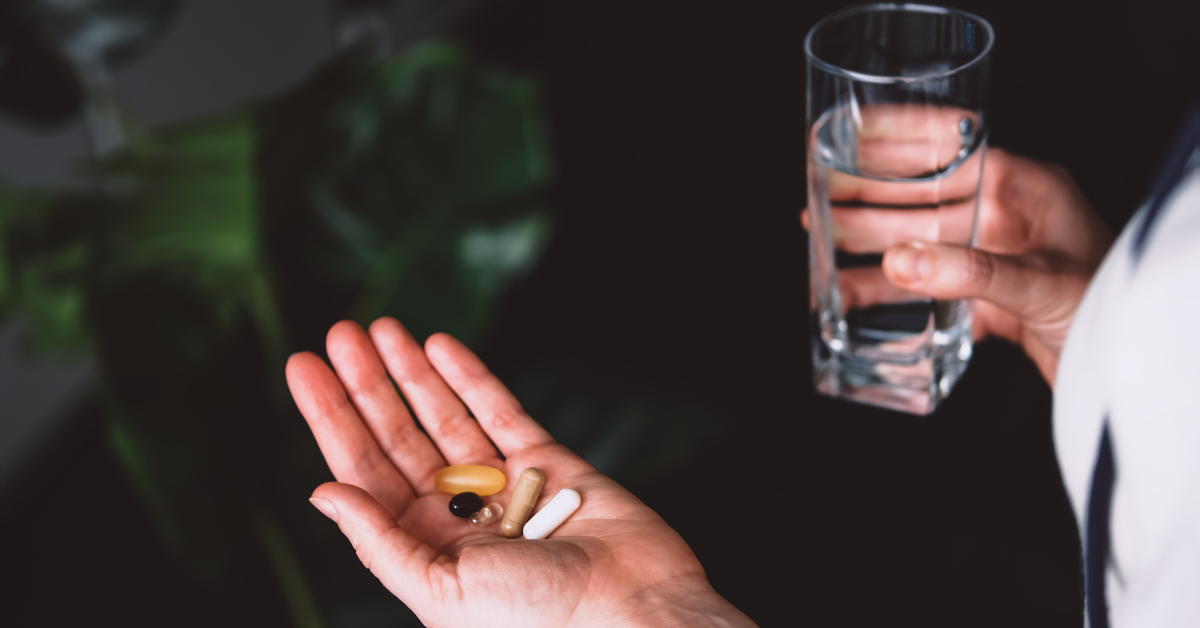Over 40 million Americans struggle with addiction, and finding treatments that work is more significant than ever. Medication Assisted Treatment (MAT) stands out as a leading solution that combines FDA-approved medications with counseling and behavioral therapies. This proven method helps patients handle withdrawal symptoms and stay on track with their recovery.
MAT creates several paths to recovery through prescribed addiction medications and complete support services. Medical professionals use specific MAT medications that reduce cravings, prevent deaths from overdose, and support recovery that lasts. The treatment works on both physical and mental aspects of substance abuse and gives patients an all-encompassing approach to achieve lasting sobriety.
What is Medication Assisted Treatment (MAT)?
Medication Assisted Treatment (MAT) offers a detailed approach that combines FDA-approved medications with behavioral therapy and counseling to treat substance use disorders. This integrated treatment works better because it targets both the physical and psychological aspects of addiction and creates a clearer path to recovery.
Definition and components of MAT
MAT combines pharmacotherapy with behavioral health counseling to create a comprehensive program that addresses patient needs. Qualified providers prescribe medications while establishing patient agreements for treatment planning. The program ensures patients can access counseling and psychosocial support services through onsite facilities or referral networks.
FDA-approved medications for addiction
Medical professionals use medications approved by the FDA to treat substance use disorder and alcoholism:
- Methadone: A full opioid agonist that controls withdrawal symptoms and reduces cravings. Patients can only access this through certified opioid treatment programs
- Buprenorphine (Suboxone, Subutex, Probuphine, Sublocade): A partial opioid agonist that manages withdrawal symptoms and reduces cravings. Qualified clinicians can prescribe this medication
- Naltrexone (Vivitrol, ReVia): An opioid blocker that stops opioids from affecting the body. Any licensed clinician can prescribe this medication
- Disulfiram (Antabuse): Causes unpleasant effects if alcohol is consumed.
- Acamprosate (Campral): Helps stabilize brain chemistry, reducing cravings and withdrawal symptoms.
- Lofexidine (Lucemyra): Non-opioid medication approved for reducing withdrawal symptoms associated with opioid detoxification.
- Topiramate (Topamax): Off-label use; an anticonvulsant that can reduce alcohol cravings and may reduce cravings for cocaine.
- Gabapentin (Neurontin): Off-label use; helps reduce withdrawal symptoms and cravings.
- Bupropion (Wellbutrin): Off-label for cocaine and methamphetamine cravings; boosts dopamine levels.
- Modafinil (Provigil): Off-label; used to reduce stimulant cravings and support cognitive function.
- N-Acetylcysteine (NAC): An antioxidant supplement studied for cannabis cravings, though not FDA-approved for this purpose.
- Oxytocin: Investigated in clinical trials for reducing cannabis withdrawal, though not FDA-approved.
- Tapered Doses of Benzodiazepines: Gradual dose reduction of the same or a longer-acting benzodiazepine.
- Anticonvulsants (such as Gabapentin, Pregabalin): Off-label; helps manage withdrawal symptoms and reduce cravings.
- Antidepressants: Selective serotonin reuptake inhibitors (SSRIs) like fluoxetine, or serotonin-norepinephrine reuptake inhibitors (SNRIs) like venlafaxine, to manage co-occurring mood disorders.
- Antipsychotics: Used for co-occurring psychotic symptoms or mood stabilization.
- Beta-blockers (e.g., Propranolol): Sometimes used to manage anxiety during detox or withdrawal.
- Clonidine: Used to reduce some withdrawal symptoms, especially with opioids and alcohol.
- Anticonvulsants (e.g., Carbamazepine, Valproate): Can be used for mood stabilization or withdrawal symptom management.
How MAT works to treat addiction
These medications target the mu-opioid receptors within the endogenous opioid system, each with its unique mechanism of action. Methadone and buprenorphine activate these receptors that reduce withdrawal symptoms and cravings. Naltrexone blocks the euphoric effects of opioids completely.
The medications help patients through:
- Brain chemistry normalization
- Opioids’ euphoric effects blockage
- Physiological craving relief
- Body function normalization
These medications combined with counseling and behavioral therapies create an all-encompassing approach that works better than behavioral interventions or medication alone. MAT substantially improves patient’s treatment adherence and reduces illicit opioid use compared to non-medication approaches.
Benefits and Effectiveness of MAT
Studies have proven that medication-assisted treatment works well for patients with substance use disorders. MAT substantially improves patient outcomes and enhances both recovery progress and public health measures.
Reduced overdose deaths and criminal activity
Medication-assisted treatment shows remarkable success in preventing overdose deaths. Studies reveal that people with opioid use disorder have 50% lower mortality rates. A detailed study of 100,000 patients over the last several years proves that MAT with buprenorphine or naltrexone reduced overdoses by 22%. The combination therapy with additional support services decreased overdoses by up to 31.4%.
MAT participants show a most important decline in criminal activity. Their involvement in illegal activities drops steadily, especially when you have methadone maintenance therapy as part of the treatment programs.
Improved treatment retention and outcomes
Medication-assisted treatment helps patients achieve significant health improvements. Research shows remarkable progress in key health indicators:
- 31.8% increase in overall health status
- 26.5% reduction in anxiety symptoms
- 30.8% decrease in depression levels
- 31.7% reduction in heroin use
- 13.9% decrease in mortality rates
Different treatment programs report retention rates reaching up to 91% after 12 months. Patients who stick with their treatment plan demonstrate better social skills and find it easier to keep their jobs.
Cost-effectiveness of MAT
Medication-assisted treatment offers substantial economic benefits through reduced healthcare and criminal justice costs. Research shows that MAT programs save between $25,000 to $105,000 per person’s lifetime compared to no treatment. Methadone combined with contingency management delivers the highest cost savings, and all MAT forms provide positive economic returns through decreased healthcare use and lower criminal justice involvement.
The inclusion of criminal justice costs shows that MAT programs yield about 1.0 additional quality-adjusted life years (QALYs) per person. This makes them beneficial both clinically and economically for society.
Challenges in Accessing MAT
Medication-assisted treatment works well, but the most important barriers stop many people from getting this vital care. Healthcare providers and patients must overcome a complex web of obstacles to create successful treatment programs.
Provider shortages, especially in rural areas
Healthcare access gaps show alarming trends in rural communities. About 20% of Americans live in rural areas, yet only 10% of physicians work there. This creates most important challenges if you have to seek medication-assisted treatment.
- Rural regions contain three out of five federally designated health professional shortage areas
- People living in rural areas must travel longer distances with limited transportation choices
- Rural physician numbers will likely drop by almost 25% by 2030
- Rural areas host only 1% of graduate medical training programs
Stigma and misconceptions about MAT
Stigma creates the most important barriers that prevent people from accessing treatment. Healthcare professionals’ negative attitudes toward patients with substance use disorders often result in poor quality care. Both healthcare providers and the public wrongly believe that MAT “substitutes one addiction for another.” This belief persists despite strong evidence that proves MAT works effectively.
Regulatory and insurance barriers
Healthcare providers and patients face multiple hurdles due to complex regulations and insurance restrictions. Prior authorization requirements delay access to life-saving medications. Strict regulations also limit the number of healthcare providers who can prescribe certain MAT medications. Insurance creates several challenges.
State laws restrict medication quantities and mandate complex prior authorization processes. Step therapy rules force patients to try cheaper options first. These obstacles lead to dangerous delays when starting treatment and make patients more likely to stop their treatment completely.
These combined challenges make it extremely difficult to get proper treatment. Less than 35% of adults with opioid use disorder receive any treatment during a year. This low use of medication-assisted treatment poses a major public health challenge that needs systematic changes to work properly.
Implementing MAT in Care Settings
Healthcare providers need a well-laid-out approach that combines clinical expertise and detailed support systems to implement medication-assisted treatment successfully. Medical facilities nationwide have created innovative models that blend MAT services into their existing care frameworks.
Best practices for MAT in Treatment Centers
A successful MAT program needs the core team as its backbone. The team consists of:
- Medical Provider: Leads medication management and treatment protocols
- Care Coordinator: Takes charge of patient scheduling and ensures treatment adherence
- Behavioral Health Specialist: Delivers counseling and psychological support
- Administrative Staff: Takes care of documentation and regulatory compliance
Treatment centers benefit from a tiered care model that adapts support levels based on patient requirements. Medical staff conducts urine drug screenings when treatment begins and performs random tests throughout the process, at least every six months. Patients who show stability in their treatment plan can access care through remote telehealth appointments.
The treatment journey unfolds in these steps:
- Patient assessment and placement
- Medication induction under medical supervision
- Weekly follow-up visits for the first month
- Monthly visits for six months
- Quarterly visits for stable patients
Resources and support for families
Family involvement boosts treatment outcomes through evidence-based therapeutic approaches. Multi-Dimensional Family Therapy adapts treatment to home, school, and community settings. Behavioral Family Therapy helps modify learned substance use behaviors within family dynamics.
SAMHSA offers detailed resources that help families:
- Treatment Improvement Protocols
- Educational materials about addiction and recovery
- Communication and conflict resolution guides
- Support group information
Family therapy sessions help tackle everyday challenges like better communication, conflict management, and recovery support. These sessions are available in person or through telehealth platforms. This flexibility helps families who struggle with transportation or scheduling.
Treatment centers should run regular family education workshops that cover:
- Understanding medication-assisted treatment
- Ways to spot and prevent relapse
- Recovery support while setting boundaries
- Finding community resources and support networks
MAT at Milton Recovery Centers
Milton Recovery Centers offers a detailed medication-assisted treatment program that brings hope to people who don’t deal very well with substance use disorders. The center merges FDA-approved medications with therapeutic support to create customized recovery paths that work for each patient.
The center’s medication-assisted treatment program has these core components:
- Customized medication plans using FDA-approved options
- Individual and group counseling sessions
- Mental health assessment and treatment
- Development of coping mechanisms
- Ongoing recovery support
Milton’s specialized PHP (Partial Hospitalization Program) and IOP (Intensive Outpatient Program) provide substance abuse disorder treatment through an integrated approach. The clinical team knows that addiction affects both body and mind and carefully selects appropriate addiction treatment medications based on each patient’s medical needs and recovery goals.
The center stands out because of its steadfast dedication to treating mental health disorders, among other addiction issues. The team at Milton Recovery Centers carefully monitors and adjusts medication for drug addiction while helping patients build the skills they need for long-term recovery. This focus on both physical dependency and psychological well-being builds a resilient foundation for lasting healing.
Patients get full support to manage withdrawal symptoms and cravings through prescribed MAT medications. This allows them to focus on their therapeutic trip. The center’s evidence-based methods have shown great success in helping people take back control of their lives while developing skills to maintain long-term sobriety.OriginalHumanized





7 thoughts on “Understanding Medication Assisted Treatment for Addiction”
I hate that there are still so many stigmas around this. If MAT works best, and the patient agrees, then it’s the right course of treatment.
I had no idea there were so many medications out there to help with addiction. I hope those who need it are able to take full advantage of them.
This was such an interesting read! The world of addiction treatment has certainly come a long way!
This is certainly a unique approach to take for addiction! I’m glad to have been able to learn a little bit more of this method.
This article does a great job explaining how MAT can support people on their recovery journey. How long does it usually take?
Thanks for the info on medication for addiction. It all gets confusing! This will be very helpful for those just starting medication to get a better understanding for what’s available.
We had experience with something like this for my sister about 30 years ago. I can see how much more improved it is today